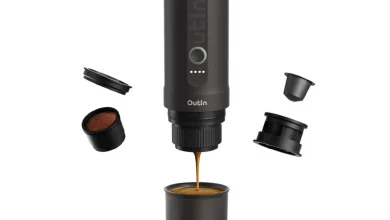Limited-Time $0.0012 BlockDAG Offer and BWT Alpine Formula 1® Deal Race Ahead of ADA’s Triangle Setup & PENGU’s Breakout
The competition among the top crypto coins right now is heating up as the market enters another defining week. BlockDAG just dropped a new TGE Bonus code offer, the final presale opportunity priced at $0.0012 per BDAG, while leveraging its multi-year BWT Alpine Formula 1® partnership to dominate headlines.
With over $420 million raised, 312,000 holders, and 3 million X1 miners, the project’s traction is undeniable. Meanwhile, traders eye the Cardano (ADA) price prediction amid tightening consolidation and an ongoing PENGU price rally following bullish engulfing signals. As BlockDAG accelerates toward Genesis Day, its combination of sports visibility, blockchain progress, and market adoption continues to outpace its peers.
PENGU Price Rally Gains Attention as Consolidation Continues
The PENGU price rally has turned heads this week as Pudgy Penguins’ native token climbed 8.2% to $0.03388, outperforming broader market averages. The weekly chart shows tight consolidation between $0.02947 and $0.03394, mirroring earlier accumulation phases that preceded strong upswings. Technical indicators hint at a possible bullish engulfing pattern, backed by clustered trading volume and renewed market interest.
Against Bitcoin, PENGU gained 6.6%, signalling relative strength among smaller-cap assets. Traders are closely watching the $0.03394 resistance, which, if broken, could signal renewed momentum toward higher ranges. Meanwhile, support at $0.02947 has remained firm, creating a clear risk/reward setup.
The PENGU price rally stands as an example of how consolidation phases often precede market expansion. However, while speculative enthusiasm builds, established leaders like BlockDAG continue to attract institutional and mainstream attention, positioning themselves among the top crypto coins right now due to verified progress and global partnerships rather than short-term hype.
Cardano Price Prediction Tightens in Symmetrical Triangle
The latest Cardano (ADA) price prediction shows ADA trading around $0.837, consolidating within a symmetrical triangle pattern as momentum cools near resistance. Buyers are defending support between $0.82–$0.80, while resistance at $0.85–$0.87 continues to cap advances. A breakout above $0.87 could trigger moves toward $0.91 and $0.94, though failure to hold $0.80 risks a drop to $0.75 or even $0.68.
On-chain data adds complexity: Coinbase ADA reserves surged 462%, from 1.7 million to 9.56 million ADA, raising questions about supply dynamics. While some interpret the spike as institutional positioning, others see potential short-term selling pressure. RSI remains neutral near 50, confirming indecision.
For now, traders await confirmation from volume before ADA’s next move. Although Cardano’s fundamentals remain strong, sentiment around the Cardano price prediction remains mixed, especially as projects like BlockDAG deliver tangible growth beyond chart patterns.
BlockDAG’s TGE Code Spark Massive Buying Interest
BlockDAG’s reputation as one of the top crypto coins right now has been reinforced by its groundbreaking collaboration with the BWT Alpine Formula 1® Team, a multi-year partnership that merges blockchain technology with one of the world’s most-watched sports.
Officially unveiled at Singapore’s Raffles Hotel during the “CRYPTO FAST LANE” event, the deal featured Alpine F1® race cars, driver appearances, and immersive fan activations. More than sponsorship, this partnership represents integration. BlockDAG is now the Exclusive Layer 1 Blockchain Partner of BWT Alpine Formula 1®, blending performance and precision across both ecosystems.
Parallel to this global campaign, BlockDAG’s TGE phase marks the final presale opportunity before Genesis Day. By using the TGE code, participants lock in Genesis Priority, ensuring recognition and early access when the network launches. At $0.0012 per BDAG coin in Batch 31, this can be the last low entry point before the confirmed $0.05 exchange listing, presenting a potential over 2,900% upside for early buyers.
The project has already raised over $420 million, selling nearly 27 billion BDAG coins to 312,000 holders, alongside 20,000 hardware miners shipped and over 3 million X1 app miners actively engaged. With Dashboard V4 offering a live, exchange-style presale interface and real-time metrics, BlockDAG’s ecosystem stands out for transparency and engagement. Analysts project its valuation could reach $1 soon after listing, scaling toward $5–$10 long-term as adoption accelerates.
Between its verified technology, audited infrastructure, and mainstream Alpine partnership, BlockDAG continues to expand its reach far beyond presale success, cementing its leadership among the top crypto coins right now.
Final Takeaway
The Cardano price prediction reflects technical hesitation, and the PENGU price rally showcases short-term enthusiasm, but BlockDAG is operating on another level entirely. Backed by its BWT Alpine Formula 1® Team partnership, transparent Dashboard V4, and TGE Bonus Code offer at $0.0012, the project has transformed from a presale success story into a global brand.
With nearly 27 billion coins sold, 312K holders, and over 3M miners, BlockDAG has built real infrastructure that extends beyond speculative charts. As the Genesis Day countdown continues, the window to join at $0.0012 is closing fast. Among the top crypto coins right now, few can match BlockDAG’s combination of cultural visibility, verified delivery, and measurable potential, making it the project racing ahead of the pack.
- Presale: https://purchase.blockdag.network
- Website: https://blockdag.network
- Telegram: https://t.me/blockDAGnetworkOfficial
- Discord: https://discord.gg/Q7BxghMVyu




